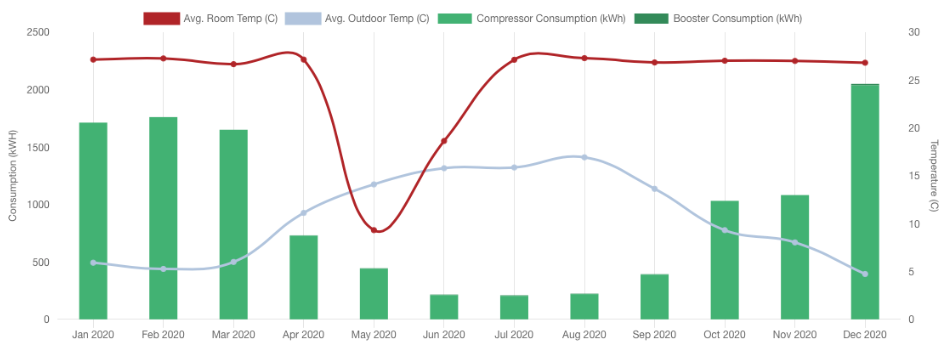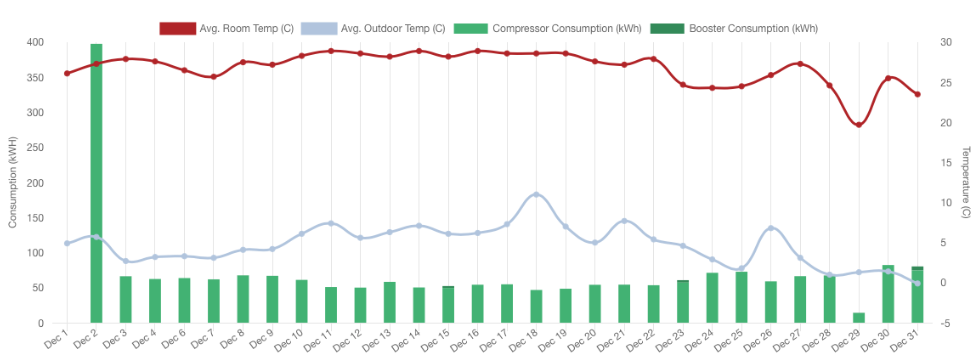We recently spoke about the general performance and efficiency of our air source heat pump (ASHP), but with 2020 behind us, we have a full year of data that we can now share.
From January 1-December 31, 2020, our ASHP consumed about 11,468kWh of electricity to drive our central heating running and heat up our hot water. Our electricity tariff for 2020 was £0.15/kWh which means that we spent around £1,720 on our heating last year.
Not surprisingly, given how awful the weather has been, December was our heaviest month because the weather was cold and humid, requiring the ASHP to work harder with more frequent defrost sessions.

In December, we used about 1,756kWh of electricity to run the air source heat pump, and at our rate of around £0.15, this equated to £263. As mentioned in many of other posts and videos, we were spending £250/month for oil to heat the house, but it was only being heated for certain periods during the day, versus our ASHP that runs 24/7.
So even though December was a little bit more expensive, this is something we can certainly live with because we only paid £162 to heat the house in November and £155 in October, compared to £250 for every autumn and winter month when the oil boiler was our primary source of heating.

Staying on the subject of oil boiler versus air source heat pump, we mentioned that our overall heating bill for 2020 was £1,720. In 2018, when the boiler was running, we spent £1,750 on oil to heat the house and water for just seven months. This in itself is quite the saving.
We’ve also recently switched energy providers (we will post a review during the course of January), which will take our tariff down from £0.15 to £0.10 per kWh. This will hopefully result in additional savings on our central heating and general electricity usage.
In case you haven’t seen our series on air source heat pumps, we’ve embedded three episodes below that discuss why we opted for an ASHP, what the installation entailed and our system’s performance and efficiency.
